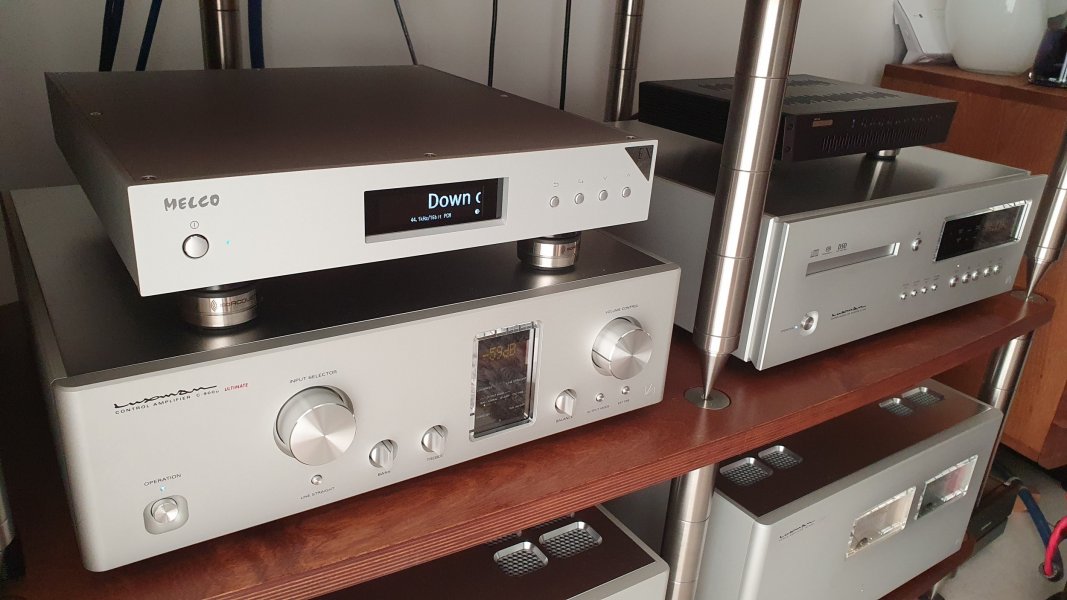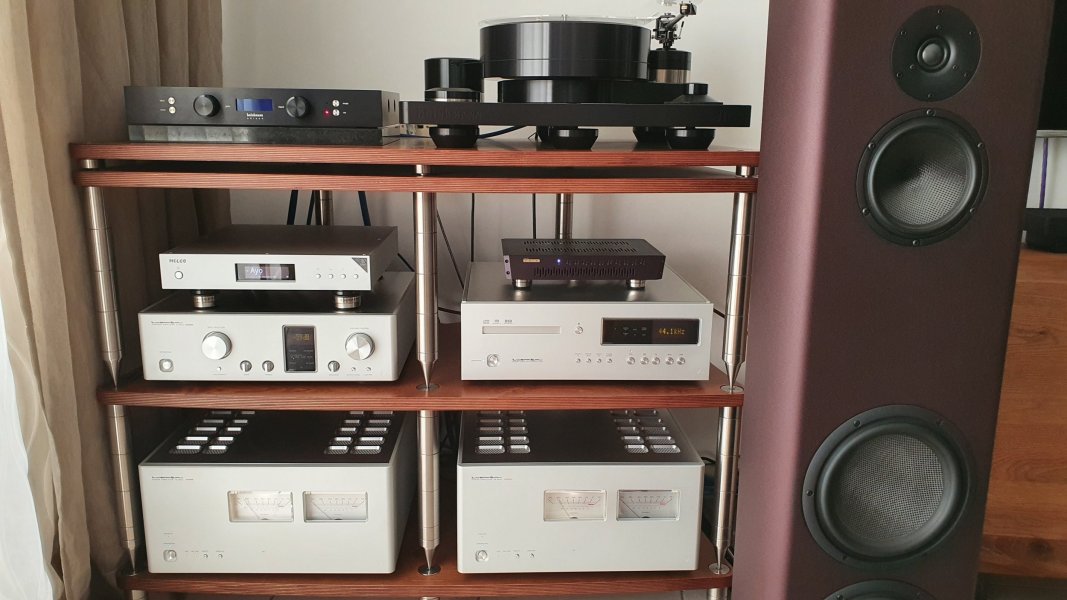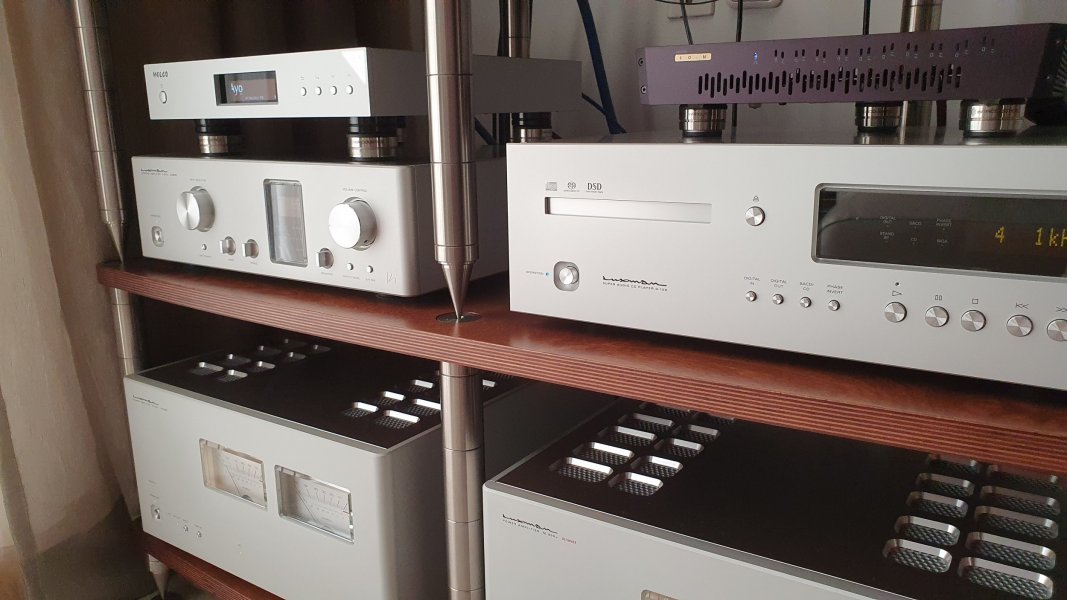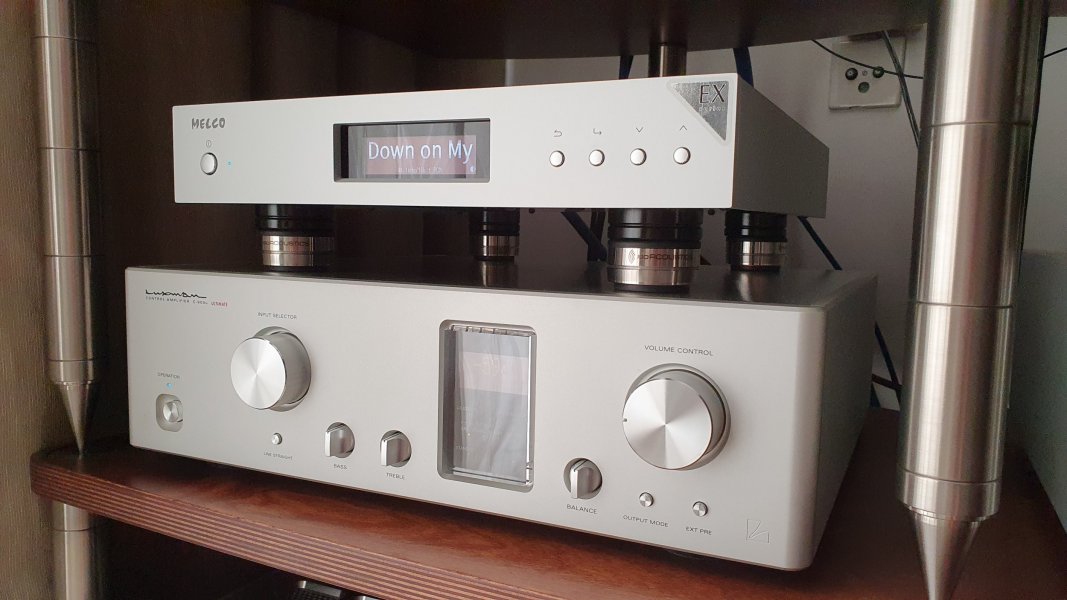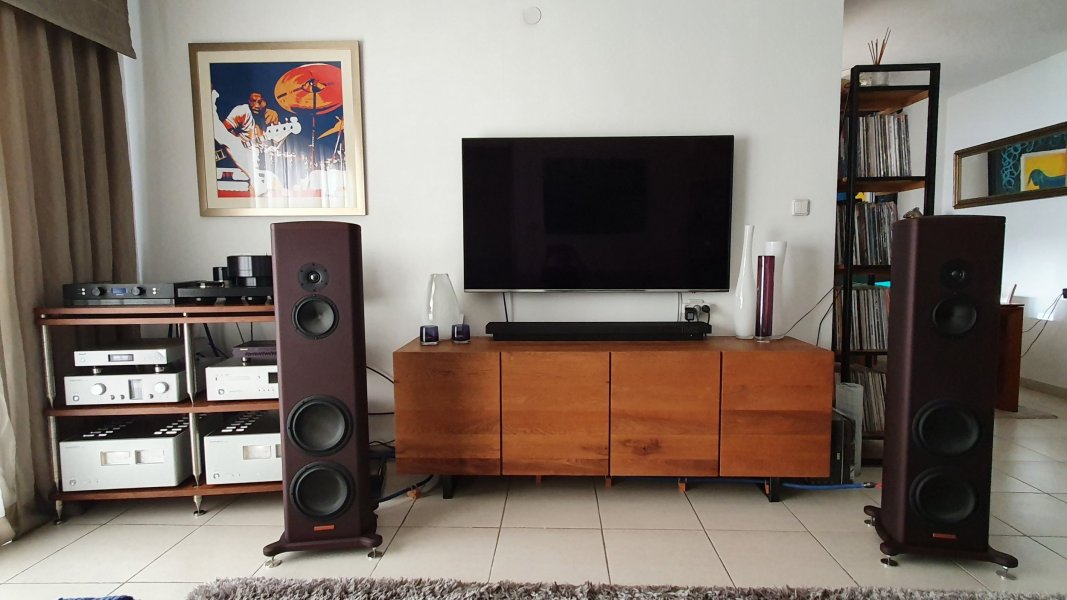Melco HA-N1Z / 2EX-H50 Digital Music Server - Owner Review (Part 2)
Sound, how does the N1 + D-10X combination sound
For me, the N1 is connected to an integrated device (SACD \ CD \ DAC) by Lexman via a Cardas USB cable (Cardas Clear USB), in the future, I will diagnose additional USB cables.
Even before the end of the "break" of the device, there was no problem in distinguishing the outgoing sound from the D-10X compared to the streaming made in parallel from the Cary Audio DMS 600 device (via RCA Digital connection) to the streaming made from the N1 server, these differences sharpened as the N1 worked ..
In short - the combination of the N1 with the D-10X surprised me beyond the expectations and digital experiences I have heard so far with me or other friends, yes also converters at a price north of 100K NIS (roughly equals to 30k USD).
As someone who has already gone through a number of digital sources the first thing that suits the listener is the musical experience and excitement that the combination of the N1 + D10X produces, for analog lovers like me it is love from first sound, a digital sound that is not ashamed or apologetic next to analog.
And by elaborating ...
Emotions - If there is anything that Analog manages to convey and to this day I have had a hard time accepting it digitally it is emotion, here the combination of the N1 and D-10X is hugely successful. the combination of the two managed to overwhelm veteran audiophiles from the abundance of erupting emotion.
Sound Organic - The sound is full of emotion and natural dynamism, the feeling that the only thing that can limit the sound emanating from the system is the quality of the recording.
Sound Textures - The combination of the N1 and D-10X manages to bring out a deep and dense layer of textures, these allow you to enjoy a particularly rich range between the lowest and highest tones.
Presentation - The N1 has excellent presentation capability to produce detail, separation, depth, stage, and 3D. these were not there at the same quality when the files were streamed through the DMS 600 media server.
Micro Dynamics - All the details of the tools, even the smallest and weakest, are easily distinguished.
Macro Dynamics - Noisy sections (drums slam, musicians' croissants) are difficult to impossible to come up with, the reaction here is immediate and bursts loudly whether it is a symphony orchestra or an electronic section.
Bass - Bass segments sound deep with a lot of layers, more than streaming through the DMS600 which excels in the lower range, I will note that the bass combined with the N1 + D-10X is a little more caressing though deeper than through streaming from the DMS600, this and much closer to what That I'm used to getting from my analog source (Brinkman Balance).
Vocal segments - the human voice sounds ... human (easy to say, much harder to describe), in short, you will not find here a hint of a digital artifact.
Combination N1 + DMS 600
For comparison and out of curiosity (although I already knew what the server brings with it streaming music) I chose to try to connect the N1 to the DMS converter unit (once with a network connection and once with a USB connection), not surprisingly you can also feel an improvement in sound this time. the music has become less flat and more clear, focused, rich and harmonious, in addition to an even more "black" background than what is obtained using the streamer built into the device.
Roon Connection and Integration
Music Server Software - The N1 comes with two music server software (Twonky, MinimServer) and tagging software (SongKong), I prefer working with Roon due to the richness and user experience that come with the software all ought in sound quality some versions of Roon can be drag behind the internal server software’s.
The integration with Roon is simple and fast, selecting the production menu in Roon as the control software allows, as expected, the N1 to be used as a Roon End Point (the connection to the DAC is made using USB or an Ethernet connection).
Roon immediately recognized the N1 as the Endpoint (after configuring the server USB DAC), and if you shared the N1's internal storage, Roon could play the stored files, as well as connect to music services like Tiddle and Qobuz.
Points for improvement.
• Connecting to the DAC via a USB cable brings with it countless options through the use of different cabling - assuming in the coming months I will find myself testing USB cables instead of enjoying mentee music time - an advantage for devices that combine strangers and converter together.
• Screen, albeit legible and clear but quite spartan and without graphics of the playing album, as the owner of a streamer/DAC that combines a large screen with high resolution that displays graphic richness including the album cover as well as detailed information about the playing file, this is a step back - really do not understand what the problem is In 2022, include media servers that display graphics richness such as Cary Audio, Rose150, Aurander, and others.
• Hebrew Fonts Support ( I know that’s not a concern in the US) – No font support, the device's monitor does not display Hebrew fonts (song name, singer), instead you will see large squares - it's a shame.
• 8.5 / 10 user experience, compared to an integrated and polished device like the DMS600 which has the best user experience that can be found such as Remote on and off using Roon, flexible range of connections (Ethernet, WIFI, BT, USB, COAX, OPT) Nice graphical interface, built-in capabilities Like up sampling format conversion and more .... the N1 looks and feels much more spartan. Although the N1 allows control via the Mconnect app, Roon or browser and even sends the device to Sleep mode, it lacks the professionalism to do so in style and convenience such as using the iPhone.
For example, the last option (browser) does not transfer the production menus, as usual, these will show you a photo of the device when the production is done by simulating a push of a button on the physical device (scroll the mouse and click on the buttons of the drawn device - a bit puzzling).
Summary
Regarding the combination of the N1 together with the D-10X, although this is not a result that is equal to the analog stick I have (if we are honest, horribly expensive converters are not competition for an analog set at the level that I and some other forum members own), if it is the N1 + D combination 10X succeeds where almost every digital step I have heard to date has failed - to create an exciting, melodic, live, and dynamic sound, a sound that while listening manages to make me forget that the source of the music is in a digital files/streaming from the network, for me at least that says a lot about the duo's abilities.
Regarding the N1 only, if we put aside the (very light) operation (very good) construction, the Hebrew font limit, and the slightly spartan interface and concentrate on the main point - sound, then we are talking about one of the best devices that can be found in the "sane" price segment and I will not be ashamed To say that even at a much (very) high price than the price of the N1.











